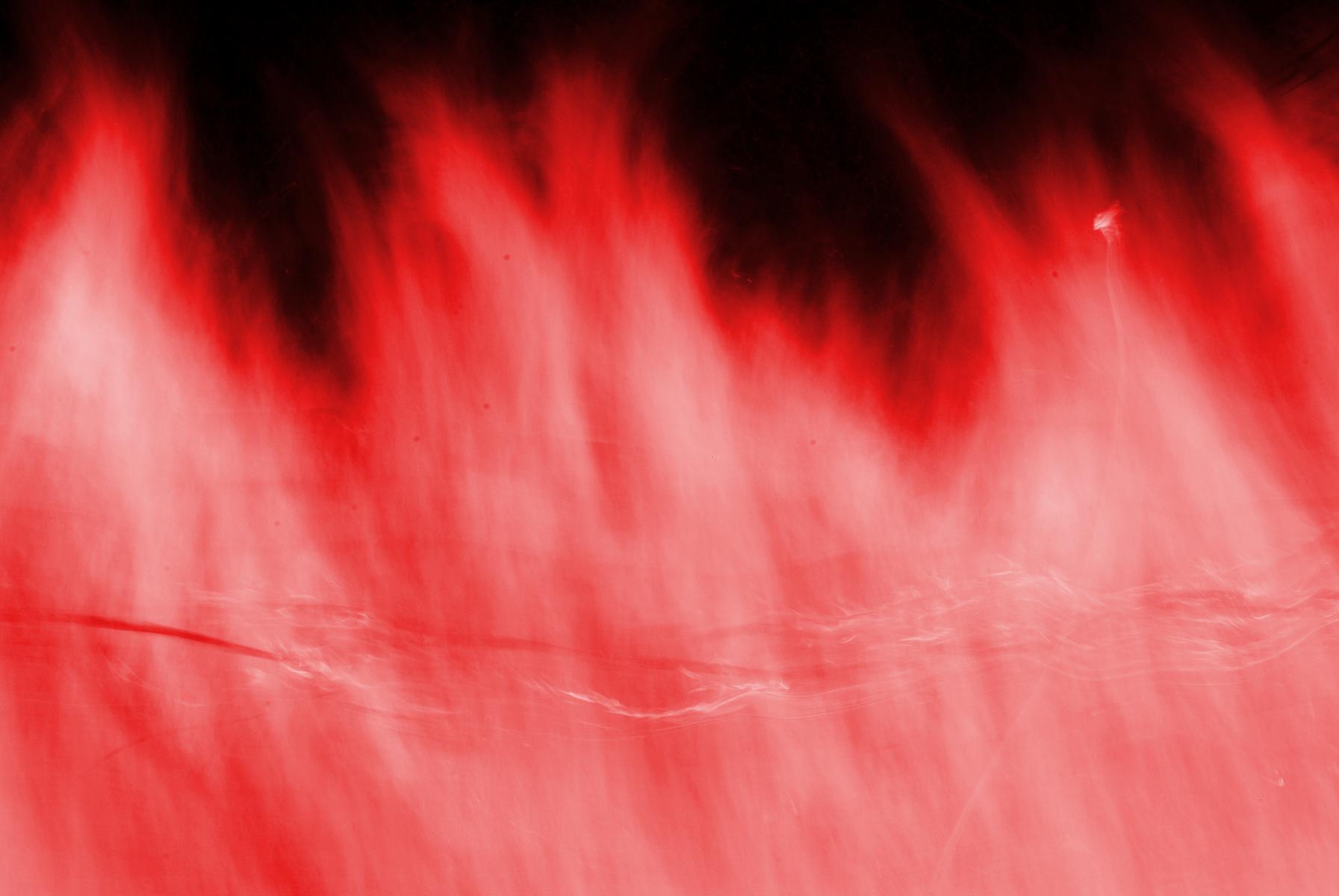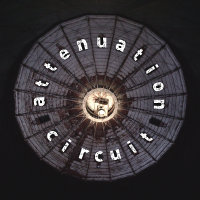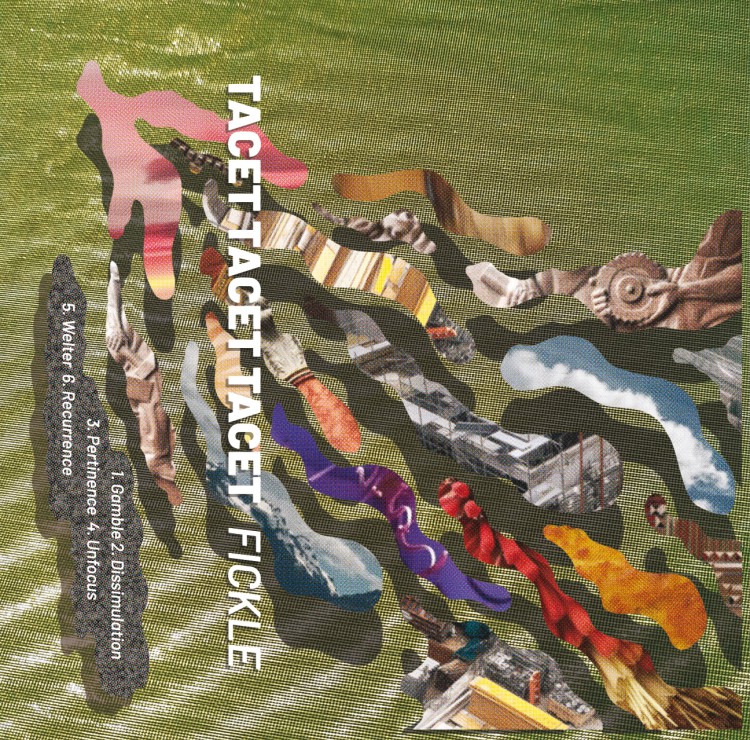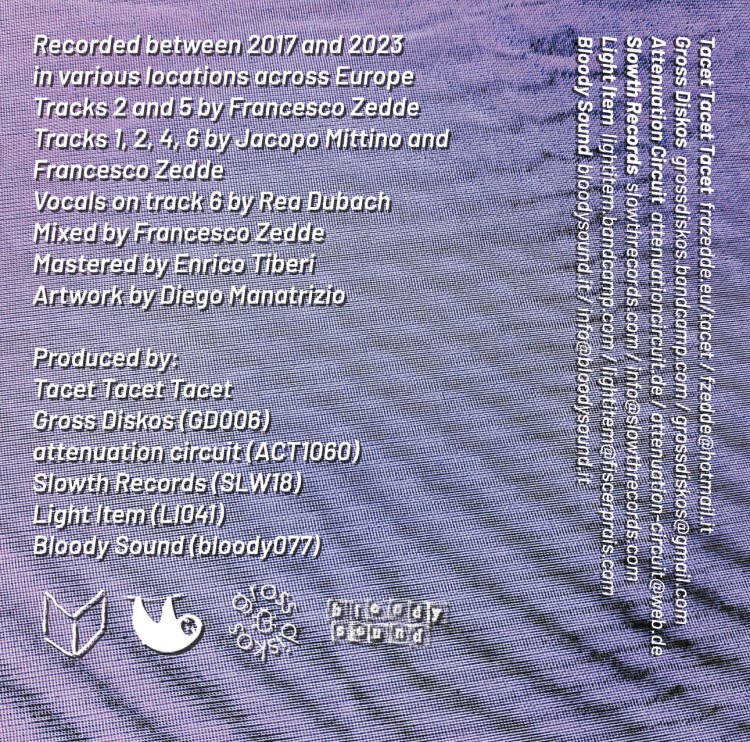Fickle
by Tacet Tacet Tacet
Tacet Tacet Tacet is a solo project of Francesco Zedde (also performing under the alias Tonto), residing in Utrecht, Netherlands. The project takes its name from John Cage's composition, 4.33, as a reference to the exploration of concrete sounds within his musical landscape. His creative output spans across genres, with elements of glitch, neo-folk, IDM, noise, drone, and ambient.
In this Cagean vein, the album starts off with silence from which random ambient sounds emerge. While Cage challenged his audience to turn these accidental sounds into a musical experience in the act of listening, Francesco Zedde (aided by collaborators Jacopo Mittino and Rea Dubach on some tracks) assembles them in a way that lets musical structures emerge from the ambient noises themselves. Almost subliminally, the listener experiences a transition from small noisy sounds to rhythms and, eventually, melodies – and back again. The transitory, fragile character of these compositions makes them all the more beautiful, as it places them in a slightly surreal, dream-like twilight zone – as if they were dance tracks from a club, but heard from a distance whilst sitting on a hill watching the sun rise after a long, dark night.
File under: ambient, IDM
ACT 1060
cassette in jewel-case
Released in 2025
unlimited edition
price: 8.00 EUR (excl. postage)
Recorded between 2017 and 2023 in various locations across Europe
Music by Jacopo Mittino and Francesco Zedde
Mixed by Francesco Zedde
Mastered by Enrico Tiberi in Berlin
frazedde.eu/tacet
tacetacetacet.bandcamp.com
Also available here: http://www.discogs.com/seller/dependenz?sort=price&sort_order=asc&q=attenuation+circuit&st
BAD ALCHEMY
TACET TACET TACET, das ist Francesco Zedde aus Jesi bei Ancona, aktiv auch als die Tonto-Hälfe des Drums- & Noise-Acts Lampredonto. Mit Fickle (ACT 1060, MC) zielt er, trotz ebenfalls jede Menge Beats und Beatz zu Bass, Synthsounds, Samples und Fieldrecordings, mehr auf die Phantasie als auf die Physis. Mit händisch betrommeltem zuckeligem Midtempo. Mit elegischem Cello und rhythmisiertem Herzschlag in schwebender Trift. Verzerrt, mit pochenden Schlägen und stumpfen Keys als basstiefer Groove. Mit verrauschtem, tickelig und ruckelig und mit klingelndem Piano akzentuiertem schlurfigem Downtempo. Und weiter zwischen gedämpftem Verharren und bedröhntem Mahlwerk, bis eine triste Glocke zu verzerrten Impulsen und dumpf bepocht wie unter Wasser läutet.
www.badalchemy.de
VITAL WEEKLY
Behind Tacet Tacet Tacet, we find Francesco Zedde, who sometimes also performs as Tonto, from Utrecht, The Netherlands. Tacet means, [hello wiki]: Tacet is Latin, which translates literally into English as “(it) is silent”. It is a musical term to indicate that an instrument or voice does not sound, also known as a rest.” John Cage famously used it in 4’33 to suggest silence for all instruments in all three parts of the piece. Cage used silence as a way of listening to the environment. What this has to do with Zedde’s music kind of eludes me; he “assembles sounds in a way that lets musical structures emerge from the ambient noises themselves. Almost subliminally, the listener experiences a transition from small noisy sounds to rhythms and, eventually, melodies – and back again.” The results are something I didn’t expect based on this text. The opening piece, ‘Gamble’, starts as a piece of improvised percussion music, and one could think this goes into Cageian territory. However, quickly this piece goes into a completely different direction, that of ambient, techno and music heavily relying on rhythm. Don’t get me wrong; the starting point and the text do not blow me away, but I love the music. These are intense compositions, not too straightforward techno-like, but the intelligent kind, without being too IDM. The ambient part plays a significant role via synthesisers and extensive use of sound effects, crushed samples, glitches and such. Maybe there is some kind of nifty improvisational tool behind this, but it all sounds damn coherent. I don’t know about suitability for a dancefloor; I somehow doubt that, but this certainly made my head nod and feet tap.
https://www.vitalweekly.net/number-1469/
Tessa Roumudis:
"‘Fickle’ by Tacet Tacet Tacet is a collection of 6 pieces, each unfolding a unique soundscape. As it collects fragments of perception—a squeaky tone of a field recording, classical instruments, spherical synths—the track will slowly create a mental map, guided by repetitive percussions or rich basses. A slowly uprising synth-surface resonates with a tiny click. A single recording of a bell sound changes the massive structure of a white noise. Yet the mind starts combining pieces into comfortable patterns; the composing beholds its breaks, and a new soundcarpet flows in. Unlock a new way of perception. In his album, Fra Zedde invites the recipient to an experience-based listening—his richly composed tracks allow to emphasize sometimes one, sometimes the other structure of a track. It gives a hint on how he experimentally works with tons of field recordings and carefully calibrated synths, drums, and instruments—generating a composition yet unknown. As the fragments of each track built a unique composition, the tracks alongside each other composed a continuum of a sound happening.
And so the artist manages to give back a part of the creative process to the listener: Let your mind flow through an unknown environment, connect fragments to a whole, never get used, stay curious and open, repeat. Everything is connected."




 brezenstudio engine
brezenstudio engine